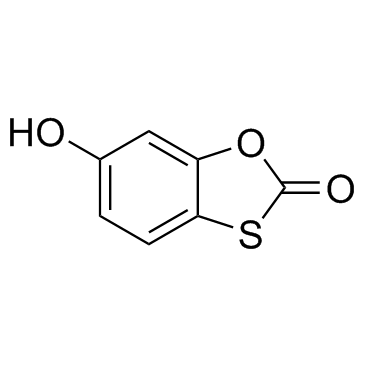Benzothioxalone derivatives as novel inhibitors of UDP-N-acetylglucosamine enolpyruvyl transferases (MurA and MurZ).
Keith Miller, Colin J Dunsmore, Jennifer A Leeds, Simon G Patching, Meena Sachdeva, Katy L Blake, William J Stubbings, Katie J Simmons, Peter J F Henderson, Joe De Los Angeles, Colin W G Fishwick, Ian Chopra
Index: J. Antimicrob. Chemother. 65(12) , 2566-73, (2010)
Full Text: HTML
Abstract
We sought to identify and characterize new inhibitors of MurA and MurZ, which are enzymes involved in the early stages of bacterial peptidoglycan synthesis.A library of ∼650 000 compounds was screened for inhibitors of Escherichia coli MurA in an endpoint assay measuring release of inorganic phosphate from phosphoenolpyruvate. Hits were validated by determining the concentrations required for 50% inhibition (IC(50)) of MurA from E. coli and MurA/MurZ from Staphylococcus aureus. The mode of action of selected inhibitors was explored by examining the reversibility of MurA inhibition, the binding of a radiolabelled inhibitor to MurA proteins and through docking studies. Inhibitors were further characterized by determining their antibacterial activity against E. coli and S. aureus.Benzothioxalone derivatives were identified that inhibited MurA from E. coli and MurA/MurZ from S. aureus with IC(50) values between 0.25 and 51 µM. Several inhibitors also exhibited activity against S. aureus with MICs in the range 4-128 mg/L. Inhibition of MurA was irreversible and a radiolabelled inhibitor from this compound class displayed stoichiometric binding to the enzyme, which was displaced by dithiothreitol. Binding was undetectable with a C115D mutant MurA protein.The results suggest a mode of action for the benzothioxalones that involves the formation of a disulfide bond with MurA/MurZ, via attack from an active site cysteine on the thioxalone ring carbonyl group, followed by ring opening to yield an S-acylated protein. The proposed covalent mode of action may prove useful in the design of new antibacterial agents.
Related Compounds
| Structure | Name/CAS No. | Molecular Formula | Articles |
|---|---|---|---|
 |
tioxolone
CAS:4991-65-5 |
C7H4O3S |
|
The supramolecular structure of 6-hydroxy-1,3-benzoxathiol-2...
2004-06-01 [Acta Crystallogr. C 60(Pt 6) , o395-6, (2004)] |
|
[Antimicrobial and cytostatic properties of 6-hydroxy-1,3-be...
1969-08-01 [Arzneimittelforschung 19(8) , 1298-304, (1969)] |
|
Contact dermatitis from thioxolone.
1993-08-01 [Contact Dermatitis 29(2) , 96, (1993)] |
|
Carbonic anhydrase inhibitors: Thioxolone versus sulfonamide...
2008-01-01 [Bioorg. Med. Chem. Lett. 18(14) , 3938-41, (2008)] |
|
Mechanism of allergic cross-reactions--I. Multispecific bind...
1991-06-01 [Mol. Immunol. 28(6) , 641-54, (1991)] |